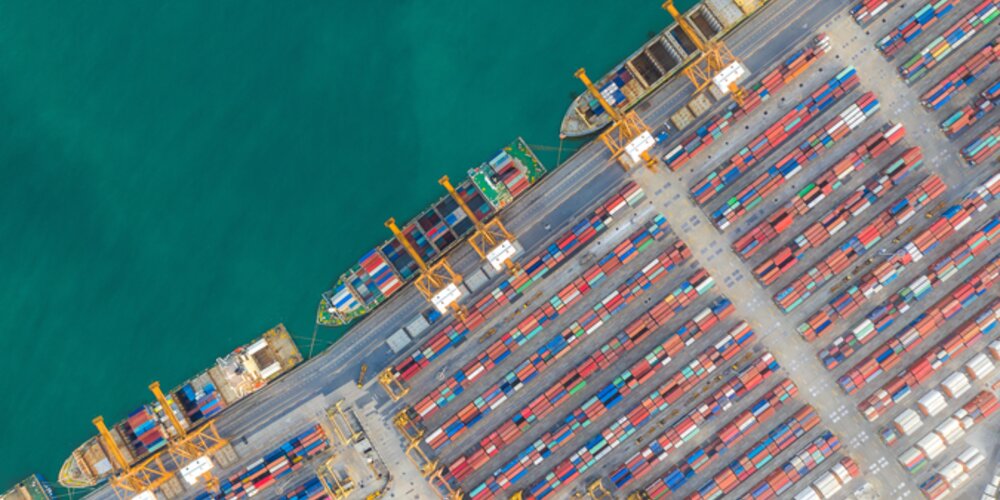TT Talk - Journey to net zero: a logistics challenge

The global logistics and transport industry is facing unprecedented challenges in achieving material carbon emissions reduction. This now-accepted necessity for humanity has highlighted that the industry is estimated to contribute approximately 20% of emissions and this is likely to continue to grow at speed.
The sheer scale of decarbonising the global supply chain is staggering. While some operators have started to overcome a portion of final mile deliveries through the implementation of electric bikes, electric vans and drones, there remains much to do in the context of middle mile logistics and cargo handling.
The global logistics and transport industry is facing unprecedented challenges in achieving material carbon emissions reduction.
Equilibrium
For decades the equipment used to handle and transport cargo globally was focused on fuel and operational efficiencies, and supply chain predictability. Logistics operators have driven ever greater levels of efficiency, through established models such as just-in-time delivery. All of which in practice resulted in a minimised cost base and carbon footprint.
Experience through recent years, however, has seemingly altered that sense of equilibrium. Given the extent of the impacts that have reverberated through the end to end supply chain, it is currently difficult to imagine a return to the equilibrium once enjoyed, one that arguably would have provided a more solid foundation from which to embrace the journey to net zero emissions.
Experiences through the pandemic have also forced all people to think differently about how they were living and working, and provided a jolt to reassess work-life balance. Thus, supply chain operators need to consider afresh workforce uncertainties. The younger generations appear less inclined to work the long often solitary hours that have typically defined the logistics industry, making it increasingly difficult to attract and retain personnel.
Supply chain operators need to consider afresh workforce uncertainties
Disruptions
There is little doubt that the relative stability of past decades has been lost with disruptions being commonplace, whether political, as a result of war or health related. Globalisation has delivered numerous benefits to societies around the world, but has now shown that the immediate impact of supply chain pinch points felt in one country are typically felt in numerous others. This has resulted in logistical demands becoming ever more complex and fragile.
While all sectors look to build resilience, the creation of differing models, such as near shoring, off shoring, multi-sourcing, just-in-time, just-in-case and everything in between, is not only placing great burden on those tasked with managing logistics operations, but is likely also driving inefficiencies resulting in greater levels of emissions.
Across the logistics sector mergers and acquisitions are frequent, and in themselves increase complexity. While often a long term goal, achieving group wide operational standardisation quickly can minimise safety, security and sustainability impacts. Optimum operational efficiency will drive reductions in emissions.
Future-proofing
For the logistics operator it is essential to meet (and exceed) customer expectations. In doing so however, particularly where multiple customers adopt diverse strategies, operational efficiency and the consequent impact on carbon emissions should not be overlooked.
For the logistics operator, their customer is typically another business – a manufacturer or a retailer for example. However, the reactions of the consumer (your customers’ customer) cannot be discounted, leading to further flux as the populace cope with the various disruptions. Societally, in most developed countries, we expect to be able to eat fresh fruit year round and to have ready access to the latest gadgets. Raw materials have to be plentiful and available to allow manufacturers to build components. When such demands are not met, pressure reverberates from the retailer all the way through the supply chain.
Consumer behaviour has changed dramatically in recent years, in ways that were incomprehensible a decade ago. E-commerce has expanded rapidly, placing great pressure on established supply chains. Same and next day delivery is now commonplace, which, across the industry, must result in operational inefficiencies.
The fast pace at which consumer demands are changing in reaction to myriad of factors often leaves retailers, and in turn their supply chain counterparts, second-guessing what levels of raw materials to order, what quantity of goods should be stored in a given location ready for rapid delivery, or what optimum stock levels need to be maintained at source and destination.
True end to end supply chain visibility is extremely difficult to achieve, even if it is possible at all. However, this utopia may be where the greatest potential value rests; consequently, it is prudent to strive in that direction. Many operators continue to explore data capture and analysis opportunities to deliver insight and monitor operations from regional watchtowers, as close to real time as practicable. This has the merit of empowering expedient and appropriate response where challenges are identified.
Significantly reducing emissions is not solely reliant on seismic changes such as the adoption of alternative fuels. Streamlining operational efficiency is something that can be achieved in the short term and often at minimal cost. Further, collaboration through the end to end supply chain may also result in a significant emissions reduction.
Streamlining operational efficiency is something that can be achieved in the short term and often at minimal cost.
-
If you would like further information, or have any comments, please email us, or take this opportunity to forward to any others who you may feel would be interested.
Documents
TT Talk Edition 308 (Chinese) (757 kB) 25/03/2024
- Author
- Josh Finch
- Date
- 05/03/2024





